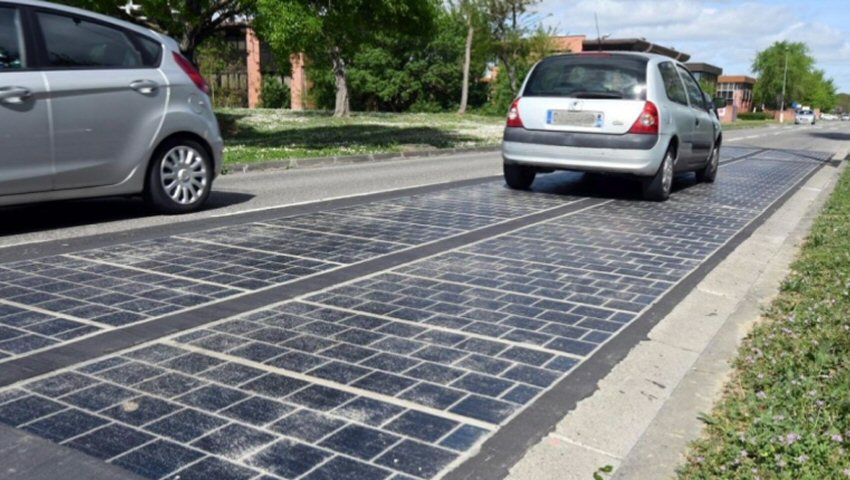
Self-healing roads are on their way!
Regular readers of these articles will know that, over the past couple of years, we have often speculated on the future. And, when we have, the topic has always been cars. Always. Never has it been their (literally) close companions - roads. Now, on reflection, it seems to us that this is an oversight. After all, roads, while perhaps not quite as much fun, are every bit as important as the vehicles they carry – until, at least, flying cars arrive.
So, we’ve decided to correct that oversight right now. We’re going to look, albeit briefly, at what the future has in store for roads, in both the short and longer term. So, if you’re sitting comfortably, we’ll begin.
And, first, we’ll look at some emerging asphalt alternatives. These are important, because, after asphalt was introduced as a way of improving pavements in the 1870s, it soon became first-choice for roads, too. And it’s been that way ever since. However, asphalt’s high bitumen (a derivative of crude oil) content means that it’s increasingly problematic, especially for environmental reasons. But what’s the alternative? Well…
Streets of rubber?
One of the easiest ways to reduce reliance on oily bitumen is to replace it with ground-up rubber tyres and other elastic materials. Not only is it a good way to ‘recycle’ tyres, but rubberised highways last nearly twice as long as their traditional counterparts, and can be 50% quieter, too. In fact, the approach has such high appeal that California, Spain and Germany all use rubberised streets, and Japan now deploy the bouncy stuff in about a fifth of its national roads.
Self-treating roads
Shifts in temperature and surface moisture mean cracks in asphalt are always forming. Unfortunately, though, we usually don't know where they are until they're dangerous. But what if a road could repair itself? It may sound like the stuff of science fiction, but scientists are already experimenting with forms of self-healing surfaces. In the Netherlands, for example, researchers recently laced a stretch of asphalt with a matrix of steel-wool fibres, transforming the surface into one big conductor. Now, when a truck with a massive magnet is driven along the road, the metal contracts, closing any gaps that may have formed. The Dutch are already employing the technology on a dozen roads.
Climate-proofing
Hot weather poses a major problem in many countries. That’s because high temperatures cause asphalt to split more quickly, which means pavement in toasty places will decay faster than governments can repair it. The solution? One option, currently being adopted by some cities, such as Los Angeles, is to paint the road surface with lighter colours so it absorbs less heat. Another option, now being experimentally applied in the UK, is to mix the asphalt with a permeable substance that slurps up lots of cooling rain. Because the usual layer of fine-crushed stone is omitted, the moisture slips through to the dirt beneath.
Back to basics
Another way of dealing with asphalt decay, is to remove the problem at source. Literally. To remove, in other words, the asphalt, and replace it with . . . well, nothing, actually. It may sound a bit radical, but that’s exactly how many local authorities in the US are tackling the asphalt problem. Instead of repaving damaged roads, they just ¬unpave them—leaving loose stones in its wake. And it seems to be working, at least on routes that don’t see too much traffic. True, too many sharp stones can be bad for tyres, but it’s no worse (and, some say, much better) than the damaging effects of potholes in poorly-maintained asphalt.
But the future of roads isn’t only about improving their durability. Roads can also be made to actively contribute to wider society. Take, for example…
Solar roads
With every passing year, the world needs more power. But from where? While there are many well-known possibilities, one option which has so far flown under the radar is ‘solar roads’. These were first trialled in 2017, by China, which put solar panels under a stretch of highway, surfaced with a plastic-like polymer thick enough to tolerate the weight of a vehicle. The energy generated was enough to power nearby houses. Following this, some US states carried out similar testing – which, once again, was successful. One minor problem: the approach costs 90 times more, per square meter, than regular asphalt. But, give the technology time, and it could easily become affordable.
Smart highways
And then there’s intelligent highways. These are, essentially, roads on which ‘listening stations’ link up with in-vehicle GPS receivers to monitor any traffic issues. Drivers can then use this data to avoid congested areas and road accidents. Smart highways are already beginning to take real shape, and are expected to significantly reduce road deaths and make driving more energy efficient. So, in a way, they act as an alternative energy source, except they save, rather than produce, energy.
Of course, there are lots more ways which roads can, and probably will, evolve, but we hope you enjoyed our quick review of some of the more interesting ones.
Finally, we can’t leave without reminding you that, if you’re looking for a great-value used car, there’s no better place to look than the Desperateseller.co.uk used car section! Whatever your taste, from a Skoda Citigo to a Mercedes Benz C Class, we’re confident you’ll find a fantastic deal.













